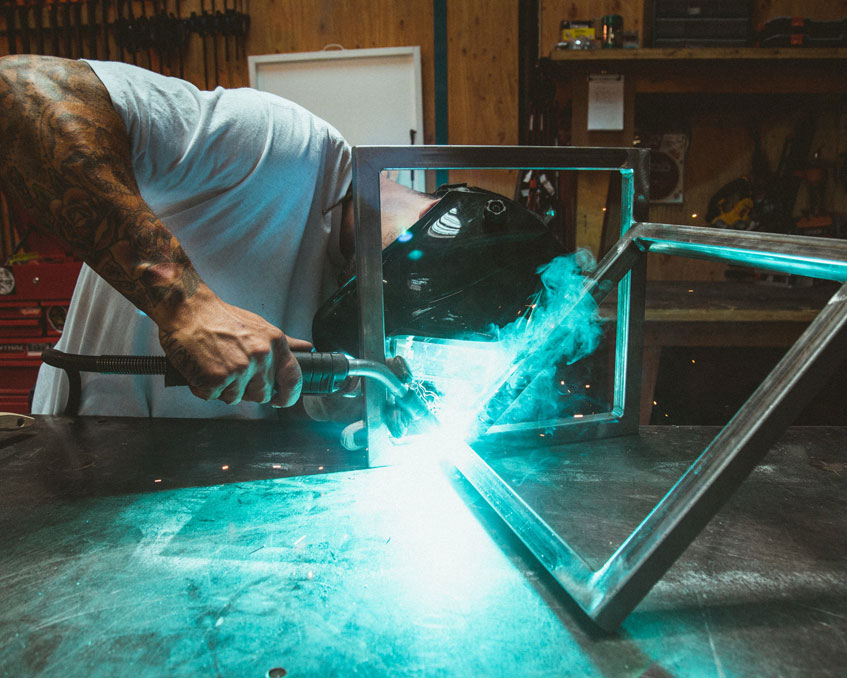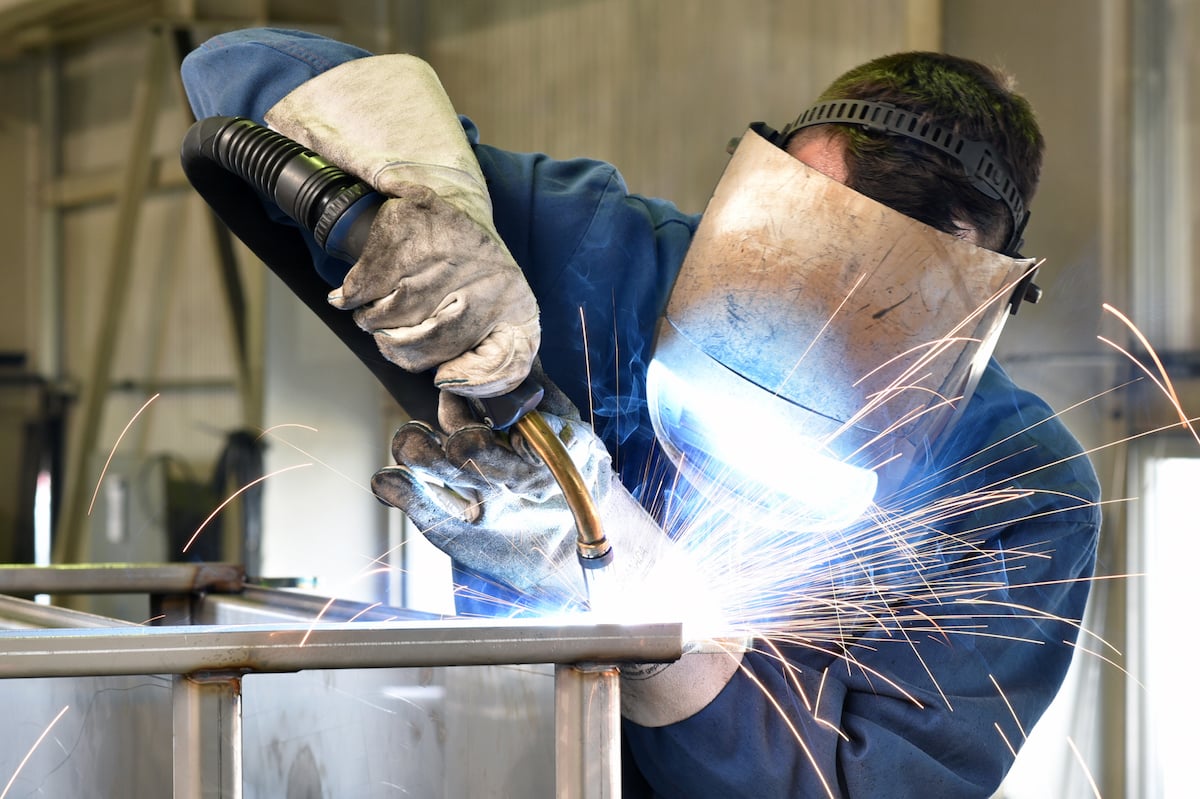Typical Welding Repair Issues and How to Address Them Effectively
Welding repair services commonly experience a range of problems that can endanger the honesty of the end product. Common problems consist of poor penetration, porosity, and imbalance, among others. Each flaw provides one-of-a-kind challenges that require certain methods for resolution. Understanding these problems is crucial for welders intending to enhance their outcomes and skills. This discussion will certainly explore these typical welding repair issues and reliable techniques to address them.
Poor Infiltration
Poor penetration occurs when the weld metal stops working to completely fuse with the base product, causing weak joints and potential architectural failings. This concern usually originates from not enough heat input, incorrect electrode angle, or inappropriate welding rate. Welders might come across poor penetration because of a mistake of the required specifications for a specific material density or kind. Furthermore, contamination on the base product's surface area can hinder reliable bonding, exacerbating the issue. To deal with insufficient penetration, welders must assure ideal settings on their tools and preserve a clean work surface. Routine assessment of welds is advised to recognize any type of shortages early, enabling timely improvements and the prevention of jeopardized structural integrity in bonded assemblies.
Porosity
Porosity is an usual flaw in bonded joints that materializes as small gas bubbles trapped within the weld steel. This defect can jeopardize the stability of the weld, bring about reduced strength and prospective failing under tension. Montana Mobile Welding and Repair Welding. Porosity usually develops from contamination, wetness, or inappropriate welding strategies, which permit gases to escape right into the liquified weld pool. To attend to porosity, welders need to ensure correct surface area preparation, keep a clean working environment, and use ideal welding criteria. Additionally, choosing the ideal filler product and securing gas can reduce gas entrapment. Routine evaluation and testing of welds can assist identify porosity early, guaranteeing timely rehabilitative actions are taken, therefore protecting the quality and reliability of the welded framework
Imbalance
Imbalance in welding can arise from various variables, including improper arrangement and thermal development. Understanding the source is necessary for effective resolution. Several adjustment strategies are available to realign elements and guarantee structural honesty.
Root causes of Misalignment
Welding imbalance frequently comes from a selection of underlying issues that can compromise structural stability. One primary reason is inappropriate fit-up of parts before welding, which can lead to gaps and irregular surfaces. Variations in thermal growth throughout the welding process can also lead to distortion, specifically if the products being joined have different coefficients of expansion. Furthermore, inadequate fixturing and clamping may fall short to hold components firmly in position, causing activity throughout welding. Poorly conserved equipment, consisting of welding devices and tools, might present disparities in the weld bead, additional adding to misalignment. Finally, operator mistake, stemming from inadequate training or experience, can likewise play a substantial role in producing misaligned welds.
Correction Strategies Available
Addressing misalignment successfully needs a mix of restorative methods customized to the particular problems available. One usual technique is the usage of fixtures or jigs to hold components in the correct setting throughout welding, making certain consistent positioning. In addition, pre-heating the products can help in reducing distortion and boost fit-up. For considerable imbalance, mechanical adjustment strategies, such as making use of hydraulic jacks or clamps, can be used to correct the position before welding. Post-weld heat treatment might likewise be essential to ease anxieties triggered by imbalance. Lastly, careful assessment and modification during the arrangement phase can protect against imbalance issues from coming to be substantial issues, promoting a smoother welding procedure and improving general structural integrity.
Distortion
Distortion is a common obstacle in welding that can emerge from various variables, consisting of uneven heating & cooling. Understanding the causes of distortion is important for implementing reliable avoidance strategies. Addressing this concern not only enhances structural honesty but likewise enhances the total high quality of the weld.
Sources of Distortion
When subjected to the extreme warm of welding, products frequently go through adjustments that can bring about distortion. This sensation mainly develops from thermal development and contraction throughout the welding procedure. As the weld location heats up, the product broadens; upon cooling, it acquires, which can produce inner anxieties. Additionally, uneven heating throughout a workpiece can exacerbate these anxieties, causing bending or flexing. The sort of product additionally plays a considerable duty; metals with differing thermal conductivity and coefficients of growth might react in a different way, causing unforeseeable distortions. Furthermore, bad joint style and inadequate fixturing can add to misalignment during welding, raising the likelihood of distortion. Comprehending these reasons is vital for efficient welding repair work and avoidance techniques.
Prevention Techniques
Reliable prevention techniques for distortion throughout welding concentrate on managing warmth input and guaranteeing proper joint layout. Preserving a regular warm input aids to minimize thermal growth and tightening, which can lead to distortion. Making use of strategies such as preheating the work surface can additionally lower the temperature slope, advertising consistent home heating. In addition, picking appropriate joint styles, such as T-joints or lap joints, can boost security and decrease stress and anxiety focus. Executing correct fixturing to secure the workpieces in position further help in preserving alignment during the welding process. Lastly, staggered welding sequences can distribute warm extra evenly, preventing local distortion. By applying these approaches, welders can considerably lower the chance of distortion and improve the total top quality of their welds.
Cracking
Breaking is a common issue encountered in welding fixings, commonly arising from numerous factors such as incorrect air conditioning rates, material option, or poor joint preparation. The incident of splits can greatly endanger the honesty of the weld, resulting in possible failings during operation. To resolve this problem, welders should initially assess the origin causes, ensuring that products are suitable and appropriately selected for the particular application. In addition, regulating the review cooling rate during the welding procedure is important; quick cooling can induce tension and bring about splitting. Appropriate joint style and prep work also add to reducing the risk. Carrying out these techniques can enhance weld top quality and resilience, inevitably reducing the chance of breaking in ended up weldments.

Incomplete Combination
A substantial issue in welding repair work is insufficient blend, which takes place when the weld steel does not effectively bond with the base material or previous weld passes - Belgrade Fabrication. This defect can lead to weaknesses in the joint, possibly endangering the stability of the bonded structure. Variables adding to incomplete blend include insufficient warmth input, incorrect welding strategy, and contamination of the surface areas being joined. To address this problem properly, welders must ensure appropriate pre-weld cleansing and surface prep work, along with adjust their welding parameters to accomplish sufficient infiltration and combination. Normal examination throughout the welding procedure can likewise assist recognize insufficient combination early, enabling for prompt restorative measures to boost the total high quality of the weld
Overheating
While welding repairs can improve architectural integrity, overheating offers a considerable challenge that can bring about product destruction. Too much warmth during welding can alter the mechanical buildings of metals, causing minimized strength, boosted brittleness, and bending. This phenomenon is especially important in high-stress applications where structural dependability is extremely important. Determining overheating can include visual evaluations for staining or distortion, along with monitoring temperature level during the welding process. To alleviate the threats connected with overheating, welders need to use proper techniques, such as regulating heat input, changing traveling rate, and making use of ideal filler products. Furthermore, executing pre- and post-weld heat treatments can aid bring back product residential or commercial properties and boost the overall quality of the fixing, making certain lasting performance and safety.
Often Asked Questions
What Are the Usual Signs of a Welding Issue?

How Can I Check My Welds for Top quality?
To test welds for high quality, one can use aesthetic examinations, ultrasonic testing, and radiographic techniques. Each strategy guarantees structural integrity, identifies problems, and verifies adherence to specified criteria, ultimately improving the reliability of the bonded joints.
What Safety and security Preventative Measures Should I Take While Welding?
When welding, one ought to focus on security by wearing ideal personal safety devices, guaranteeing appropriate air flow, protecting flammable materials away, maintaining a tidy workspace, and recognizing surroundings to stop injuries and mishaps.
Can I Repair a Weld Without Redoing the Entire Joint?
Repairing a weld without remodeling the whole joint is feasible, depending on the damage (Montana Mobile Welding and Repair). Techniques such as grinding, adding you can try here filler product, or making use of a welding process can successfully address specific imperfections while preserving the surrounding framework
What Tools Are Important for Effective Welding Services?
Necessary tools for efficient welding repair work consist of a welding maker, wire brush, more tips here mill, safety gear, clamps, and filler materials. Each tool plays a crucial role in guaranteeing high quality and safety during the repair work process. Porosity typically occurs from contamination, dampness, or incorrect welding methods, which permit gases to get away right into the molten weld pool. Badly kept equipment, consisting of welding equipments and devices, may introduce disparities in the weld grain, further adding to misalignment. When subjected to the extreme warm of welding, materials typically undergo modifications that can lead to distortion. Splitting is a common problem experienced in welding repairs, often resulting from various variables such as inappropriate cooling rates, product selection, or poor joint prep work. A considerable issue in welding repairs is insufficient combination, which takes place when the weld metal does not properly bond with the base product or previous weld passes.